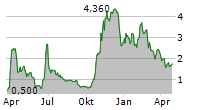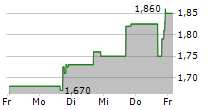
HOUSTON, TX, Oct. 28, 2024 (GLOBE NEWSWIRE) -- Nexalin Technology, Inc. (Nasdaq: NXL; NXLIW) (the "Company" or "Nexalin") today announced publication of a landmark study titled, "Altered Neuronal Activity Patterns of the Prefrontal Cortex in Alzheimer's Disease After Transcranial Alternating Current Stimulation (tACS): A Resting-State Functional Magnetic Resonance Imaging Studyi" in the Journal of Alzheimer's Disease. This study builds on recent findings from Nexalin's Deep Intracranial Frequency Stimulation (DIFS) research and further highlights the effectiveness of non-invasive neurostimulation in enhancing brain function and improving cognitive performance in patients with mild Alzheimer's disease (AD).
This new research involved 46 patients, randomly assigned to receive either real DIFS or sham treatment for 30 one-hour sessions over a period of three weeks. Resting-state functional magnetic resonance imaging (rs-fMRI) was used to track changes in brain activity, showing that Nexalin's proprietary DIFS technology significantly alters neuronal activity in key regions of the brain, providing a non-pharmacological, safe treatment option for Alzheimer's.
Key Findings of the Study Include:
- Increased Neuronal Activity and Glucose Metabolism: Patients receiving real DIFS exhibited significant increases in fractional amplitude of low-frequency fluctuation (fALFF) in key brain areas like the prefrontal cortex. fALFF, which measures regional spontaneous neuronal activity, has been shown to correlate with glucose metabolism, a crucial process for cognitive function that is often impaired in Alzheimer's patients. This suggests that DIFS may help restore metabolic functions within the brain, contributing to improved cognition.
- Sustained Cognitive Benefits: After three weeks of treatment, patients showed improvements in cognitive function, which were sustained over a three-month follow-up. Increased neuronal activity was observed in regions such as the superior parietal lobule and inferior temporal gyrus, both of which are critical for memory and cognitive processing. These results indicate that DIFS has long-lasting effects, potentially offering extended cognitive support for Alzheimer's patients.
- Enhanced Brain Connectivity: The study found improvements in regional homogeneity (ReHo) in the left middle frontal gyrus and right superior medial frontal gyrus, indicating better synchronization of neural activity between different brain regions. The modulation of brain networks by DIFS underscores its potential to improve cognitive function by enhancing brain communication pathways.
- Correlations with Improved Blood Flow and Brain Function: Enhanced blood flow was observed in several critical regions, correlating with the increases in neuronal activity. This improvement in both glucose metabolism and blood flow suggests that DIFS can help restore disrupted metabolic processes in the brain, which are commonly affected in Alzheimer's patients. Increased blood flow, particularly in memory-related areas, aligns with previous findings on Nexalin's DIFS technology, further solidifying DIFS's potential as a complementary non-invasive treatment for Alzheimer's.
- Safe and Well-Tolerated Treatment: Importantly, the study indicated no serious side effects reported among participants. Despite undergoing twice-daily stimulation sessions over three weeks, elderly patients tolerated the treatment well, with only minor sensations such as tingling that resolved quickly. This profile is particularly critical in vulnerable populations such as Alzheimer's patients.
With Alzheimer's disease affecting over 50 million people globally and projections rising to over 113 million by 2050, there is an urgent need for innovative therapies that address the root causes of cognitive decline. Current treatments primarily focus on managing symptoms, but Nexalin's DIFS technology offers the potential to modulate brain activity and restore metabolic functions, providing a new avenue for treating this debilitating disease.
This study builds on the recently announced findings from Nexalin's DIFS research, which demonstrated similar improvements in memory and cognitive function in Alzheimer's patients. The DIFS study revealed significant gains in Mini-Mental State Examination (MMSE) and Montreal Cognitive Assessment (MoCA) scores, along with increased neural activity and blood flow in the hippocampus, a region critical for memory. By confirming these cognitive improvements and extending them to broader brain networks, this new study strengthens the case for non-invasive stimulation therapies like DIFS in Alzheimer's treatment.
Dr. David Owens, Chief Medical Officer at Nexalin, commented: "We are very encouraged by the findings of this study, which reaffirm that DIFS not only improves cognitive function but also does so in a well-tolerated manner, even in elderly populations. The connections between brain activity, blood flow, and glucose metabolism suggest that DIFS may be addressing some of the underlying causes of cognitive decline in Alzheimer's patients, offering hope for long-term improvements."
Mark White, CEO of Nexalin Technology, added: "This study marks another significant milestone for Nexalin's DIFS technology. Building on our recent DIFS findings, these results further demonstrate the potential of our non-invasive brain stimulation methods to restore brain function and improve cognitive performance in Alzheimer's patients. With the efficacy shown in these studies, we are professionally optimistic regarding the future of DIFS as a treatment option that directly targets the brain's electrical activity to help slow the progression of this devastating disease."
About Nexalin Technology, Inc.
Nexalin designs and develops innovative neurostimulation products to uniquely help combat the ongoing global mental health epidemic. All of Nexalin's products are believed to be non-invasive and undetectable to the human body and are developed to provide relief to those afflicted with mental health issues. Nexalin utilizes bioelectronic medical technology to treat mental health issues. Nexalin believes its neurostimulation medical devices can penetrate structures deep in the mid-brain that are associated with mental health disorders. Nexalin believes the deeper-penetrating waveform in its next-generation devices will generate enhanced patient response without any adverse side effects. The Nexalin Gen-2 15 milliamp neurostimulation device has been approved in China, Brazil, and Oman. Additional information about the Company is available at: https://nexalin.com/.
Disclaimers
This study was conducted on a limited number of participants, and larger clinical trials are needed to confirm the efficacy and safety of DIFS for Alzheimer's disease. The information in this press release is for informational purposes only and does not constitute medical advice.
Forward-looking statements
This press release contains statements that constitute "forward-looking statements," These statements relate to future events or Nexalin's future financial performance. Any statements that refer to expectations, projections or other characterizations of future events or circumstances or that are not statements of historical fact (including without limitation statements to the effect that Nexalin or its management "believes", "expects", "anticipates", "plans", "intends" and similar expressions) should be considered forward looking statements that involve risks and uncertainties which could cause actual events or Nexalin's actual results to differ materially from those indicated by the forward-looking statements. Forward-looking statements are subject to numerous conditions, many of which are beyond the control of the Company, including those set forth in the Risk Factors section of the Company's Report on Form 10-K for the year ended December 31, 2023 and other filings as filed with the Securities and Exchange Commission. Copies of such filings are available on the SEC's website, www.sec.gov. Such forward-looking statements are made as of the date hereof and may become outdated over time. Such forward-looking statements are made as of the date hereof and may become outdated over time. The Company undertakes no obligation to update these statements for revisions or changes after the date of this release, except as required by law.
Contact:
Crescendo Communications, LLC
Tel: (212) 671-1020
Email: NXL@crescendo-ir.com
i Wang, T., Yan, S., Shan, Y., Xing, Y., Bi, S., Chen, Z., Xi, H., Xue, H., Qi, Z., Tang, Y., Lu, J. (2024).
Altered Neuronal Activity Patterns of the Prefrontal Cortex in Alzheimer's Disease After Transcranial Alternating Current Stimulation: A Resting-State fMRI Study. Journal of Alzheimer's Disease, 101(3), 901-912. doi: 10.3233/JAD-240400.




